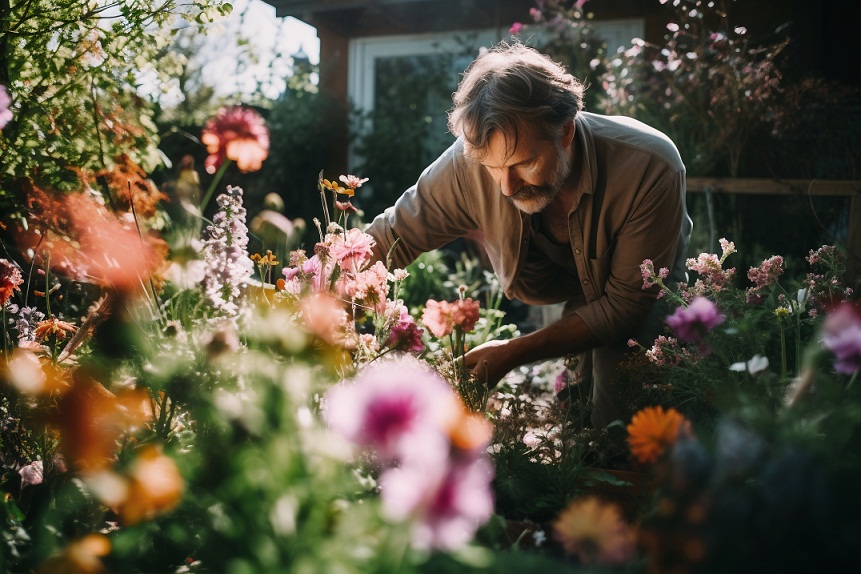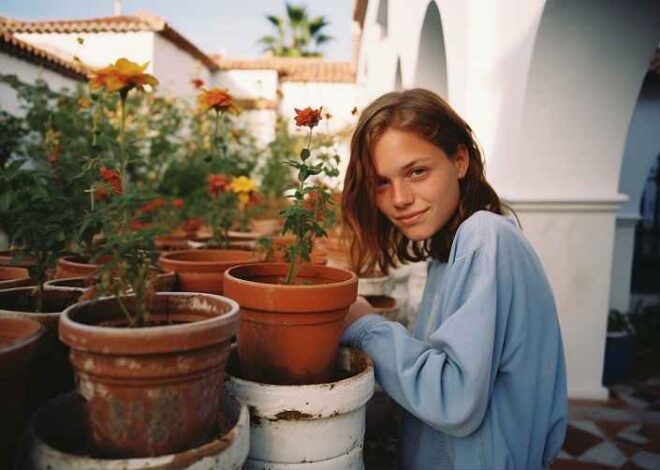
10 Tips for Growing a Stunning Wildflower Garden
Are you looking to add a pop of color and beauty to your outdoor space? Look no further than a stunning wildflower garden! Wildflowers are not only gorgeous to look at, but they also attract pollinators and provide vital habitats for wildlife. In this blog post, we will share 10 tips for growing a vibrant and eye-catching wildflower garden that will have your neighbors green with envy. From choosing the right location to selecting the perfect mix of seeds, we’ve got all the expert advice you need to create a flourishing wildflower oasis in your own backyard. Let’s get started on transforming your outdoor space into a blooming paradise!
Introduction to Wildflower Gardens
Welcome to the enchanting world of wildflower gardening, where nature’s untamed beauty blooms freely in your own backyard. Imagine a kaleidoscope of colors dancing in the breeze, attracting butterflies, bees, and birds to create a vibrant ecosystem right outside your window. In this blog post, we will explore 10 tips for cultivating a stunning wildflower garden that will not only dazzle the eye but also nourish the soul. Let’s dive into the wonders of wildflowers and unlock the secrets to creating your very own floral paradise!
Benefits of growing a wildflower garden
Are you looking to add a touch of natural beauty to your outdoor space? Consider growing a stunning wildflower garden! The benefits of cultivating wildflowers are plentiful and rewarding.
One major advantage is that wildflowers attract pollinators such as bees, butterflies, and hummingbirds, which helps support the local ecosystem. By planting native wildflowers, you can contribute to biodiversity and conservation efforts in your area.
Wildflower gardens also require less maintenance compared to traditional gardens with exotic plants. Once established, these hardy blooms can thrive with minimal intervention from you, saving time and effort.
Moreover, wildflowers can enhance the aesthetic appeal of your yard with their vibrant colors and diverse shapes. They create a picturesque landscape that changes throughout the seasons, offering visual interest year-round.
In addition to their environmental benefits, wildflower gardens can also provide therapeutic effects by promoting relaxation and reducing stress levels through nature immersion. So why not bring a splash of color and tranquility into your surroundings by starting your own wildflower garden today?
Choosing the right location for your garden
When it comes to growing a stunning wildflower garden, choosing the right location is key. Look for an area in your yard that receives plenty of sunlight, as most wildflowers thrive in sunny spots. Make sure the spot has good drainage to prevent waterlogging, which can be detrimental to the plants.
Consider the surrounding environment – are there any trees or structures that could cast shadows over your garden? Opt for a location with minimal obstructions to ensure your wildflowers get all the light they need. Additionally, think about accessibility; you’ll want a spot where you can easily tend to and enjoy your garden.
Keep in mind the natural habitat of wildflowers – some varieties prefer open fields while others thrive on rocky slopes. Research the specific needs of the wildflowers you plan to grow and choose a location that mimics their natural environment as closely as possible. By selecting the right spot for your garden, you’re setting up your wildflowers for success from the start.
Preparing the soil for planting
When it comes to growing a stunning wildflower garden, one of the essential steps is preparing the soil for planting. The quality of your soil directly impacts the health and vibrancy of your wildflowers.
Start by clearing the area of any debris or weeds that could hinder growth. Loosen the soil with a spade or fork to improve drainage and allow roots to penetrate easily. Adding organic matter like compost or aged manure can enrich the soil with nutrients vital for plant growth.
Test your soil pH levels to ensure they are suitable for wildflowers, as different species thrive in varying pH ranges. Adjust accordingly by adding lime to raise pH or sulfur to lower it if needed.
Consider incorporating native plants into your garden design as they are well-adapted to local soil conditions and climate, making them easier to grow and maintain in the long run.
By taking the time to properly prepare your soil before planting, you set a strong foundation for a flourishing wildflower garden that will bring beauty and joy for seasons to come.
Selecting the right types of wildflowers
When it comes to selecting the right types of wildflowers for your garden, consider factors like your region’s climate and soil conditions. Different wildflowers thrive in various environments, so do some research to find out which ones will flourish in your area.
Think about the aesthetic you want to create – whether you prefer a colorful mix of blooms or a more subdued palette. Mixing different shapes, sizes, and colors can add visual interest and diversity to your garden.
Native wildflowers are often well-suited to local conditions and support local wildlife, making them a great choice for environmentally friendly gardening. They also require less maintenance once established.
Consider the height of the wildflowers you choose – taller varieties can provide structure and vertical interest while shorter ones work well as ground cover or borders.
Don’t be afraid to experiment with different combinations until you find the perfect blend that suits your taste and complements your garden space.
Caring for your wildflower garden: watering, weeding, and fertilizing
Caring for your wildflower garden is crucial to ensure vibrant blooms and healthy plants. Watering is essential, especially during dry spells. Make sure to water deeply but infrequently to encourage deep root growth. Weeding regularly will help prevent invasive plants from taking over and competing for resources with your wildflowers.
Fertilizing your wildflower garden can boost plant health and flower production. Use a balanced fertilizer or organic compost in the spring before the growing season begins. Avoid over-fertilizing, as this can lead to excessive foliage growth at the expense of flowers.
Monitor your garden for pests like aphids or diseases such as powdery mildew. Consider natural remedies like neem oil or introducing beneficial insects to keep pest populations in check without harming the ecosystem of your garden.
By staying attentive and proactive in caring for your wildflower garden, you’ll be rewarded with a stunning display of colorful blooms throughout the season!
Dealing with pests and diseases in a natural way
Dealing with pests and diseases in a natural way is crucial to maintaining a thriving wildflower garden. One effective method is to encourage beneficial insects like ladybugs and lacewings, which prey on common garden pests such as aphids. You can also plant companion plants like marigolds or lavender that naturally repel harmful insects.
Another natural approach is using homemade remedies like neem oil spray to combat fungal diseases or insect infestations without introducing harsh chemicals into your garden ecosystem. Regularly inspecting your plants for any signs of pest damage or disease can help you catch issues early on before they spread.
Practicing good garden hygiene by removing any diseased or infested plant material promptly can prevent the problem from worsening. Additionally, rotating your crops each year can help disrupt pest cycles and reduce the likelihood of recurring issues in your wildflower garden.
Incorporating native plants into your garden
When it comes to creating a thriving wildflower garden, incorporating native plants is key. Native plants are well-adapted to the local environment, making them more resilient and easier to maintain. They also provide crucial habitats for local wildlife, supporting biodiversity in your garden.
By choosing native plants for your wildflower garden, you can help preserve the natural ecosystem of your region. These plants have evolved alongside native insects and pollinators, forming important relationships that benefit both parties.
Native plants come in a variety of shapes, sizes, and colors, allowing you to add diversity and visual interest to your garden. From vibrant flowers to textured foliage, native plants can enhance the overall aesthetic appeal of your outdoor space.
Researching which native plant species thrive in your specific area is essential for successful incorporation into your wildflower garden. Consider factors such as sunlight exposure, soil type, and water requirements when selecting native species to ensure they flourish in their new home.
Creating a visual appeal with different colors and heights of wildflowers
When it comes to creating a visually stunning wildflower garden, playing with different colors and heights can truly elevate the overall aesthetic. Mix vibrant hues like purple coneflowers and orange California poppies for a striking contrast that catches the eye.
Consider varying plant heights to add dimension – tall flowers like lupines or delphiniums at the back create a backdrop, while shorter blooms like daisies or coreopsis in front provide a charming foreground.
Don’t be afraid to experiment with color combinations; blues and yellows can evoke a calming atmosphere, while reds and oranges bring energy and warmth to your garden space.
By strategically placing flowers of different heights throughout your garden bed, you’ll create depth and visual interest that will keep you captivated all season long.
Harvesting
Harvesting wildflowers from your garden can be a rewarding experience. As the blooms reach their peak, you can start cutting them for fresh bouquets to bring indoors. Remember to leave some flowers on the plants for pollinators and to allow seeds to form for next year’s garden.
When harvesting, use sharp scissors or pruners to make clean cuts, ensuring the health of the plant. Arrange your freshly picked wildflowers in vases or create stunning floral arrangements that showcase the beauty of nature right in your home.
By following these 10 tips for growing a stunning wildflower garden, you’ll not only create a vibrant and colorful space but also provide essential habitats for local wildlife and contribute to preserving native plant species. Happy gardening!


